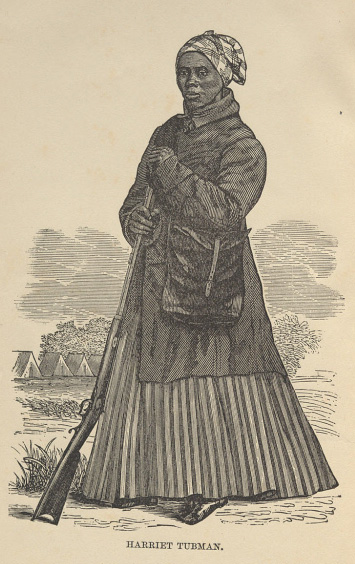Underground Railroad
The Underground Railroad is the name given to a loose network of people who helped enslaved individuals escape slavery and get to the places where fugitive slaves sought refuge along the way. The end goal of the Underground Railroad was freedom in the North or, especially after the Fugitive Slave Act of 1850, to freedom in Canada. One of the best-known “conductors” of the Underground Railroad was Harriet Tubman, who is believed to have helped 300 people escape slavery.
The black community of Beacon Hill in Boston were active in the Underground Railroad. Lewis Hayden, who had himself escaped slavery, hosted many fugitive slaves at his home and was rumored to have dynamite under his doorstep, ready to use it if slavecatchers showed up at his door. Hayden was also a member of the Boston Vigilance Committee, which provided fugitive slaves with lodging and transportation, and when necessary attempted to rescue captured individuals.
Caterer Joshua B. Smith also used his home in Cambridge as a “stop” on the Underground Railroad. He employed fugitives as cooks and waiters on his property and co-founded the New England Freedom Association, which aided fugitive slaves.
When William Talbot escaped slavery in 1853, the Beacon Hill community sent him to the estate of George L. Stearns in Medford, who hosted him at his house for several weeks until it became too dangerous for Talbot to remain, at which point Stearns drove him to Lowell so he could take a train to Montreal.

